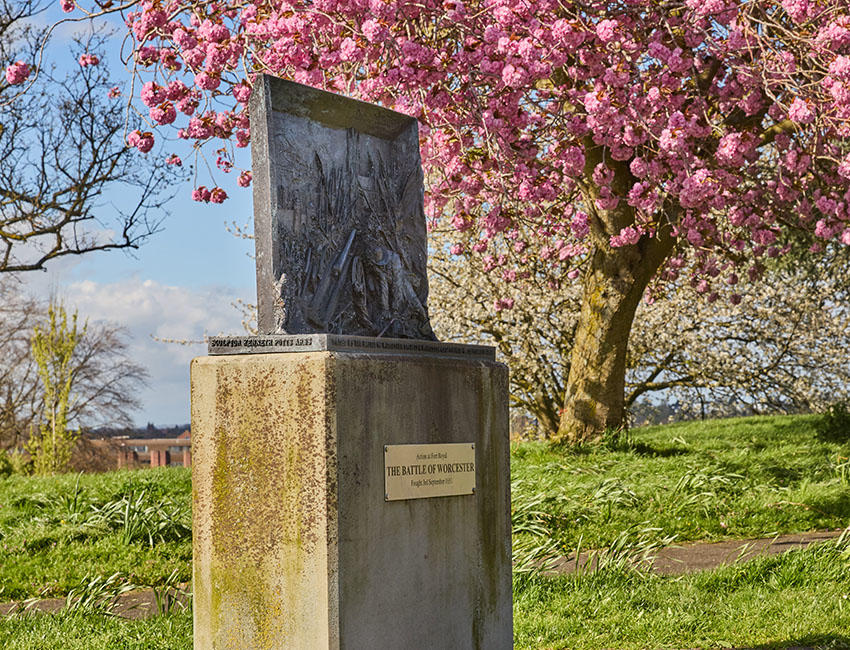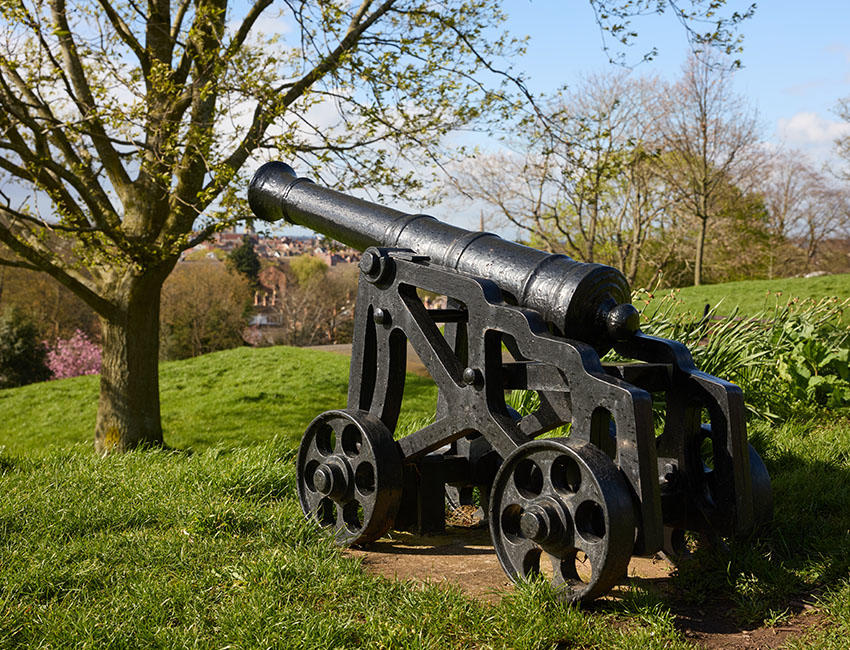Battle of Worcester
Worcester is well known as the home of Lea & Perrins Worcestershire Sauce, Royal Worcester Porcelain and acclaimed English composer Edward Elgar. But did you know that our small city also witnessed the opening and closing battles of the English Civil War?

The Battle of Powick Bridge on 23 September 1642, though insignificant in scale compared to later battles, is notable for being the first substantial military action of the Civil War in England. Nine years later and barely two miles away from that initial skirmish, Oliver Cromwell would lead the Parliamentary Army to victory against Charles II in the Battle of Worcester.
On 3 September 1651, Worcester was occupied by Charles II’s Royalist Army, who had constructed a hilltop artillery fort (Fort Royal) to protect the southeast side of the city. Cromwell launched his attack, and his Parliamentary forces managed to seize Fort Royal’s cannons, turning them on the Royalists and the city itself. It is estimated that the attack left around 4,000 Royalist soldiers dead, with an additional 10,000 captured.
Cromwell’s enemies claimed his victory was secured by making a pact with the devil, in the nearby Perry Wood, the evening before the battle. It was alleged that he was granted seven years of prosperity in return for his soul. Peculiarly, Cromwell would die from illness exactly seven years after the battle on 3 September 1658, during a heavy storm.
Charles II narrowly escaped Worcester after the battle with the help of a group of local residents, who held off Cromwell’s army while he fled onto what is now known as the Cornmarket. The loyalty shown by the residents that day earned Worcester the nickname ‘The Faithful City’.

In 1786, future US Presidents John Adams and Thomas Jefferson visited the hill where Fort Royal had once stood. Adams described it as the birthplace of democracy, and later wrote:
And do Englishmen so soon forget the ground where liberty was fought for? Tell your neighbours and your children that this is holy ground; much holier than that on which your churches stand. All England should come in pilgrimage to this hill once a year.
Today, nods to Worcester’s history and the role it played in the English Civil War can be found throughout the city. The historic building Charles II fled through is now home to the King Charles House Pub, which serves the local community while keeping the spirit of its heritage alive. The Commandery, which served as the Royalist Headquarters during the battle, once served as the only museum in England dedicated solely to the Civil Wars. Today visitors can learn about Worcester’s history through interactive exhibits, see Oliver Cromwell’s death mask, and take part in a Charles II-themed escape room game. Finally, the battlefield that provoked such awe from John Adams is now an award-winning park, named after the fortifications that once stood there. Fort Royal Park is popular with students and residents alike and is well known for its breathtaking views of the city and Cathedral.